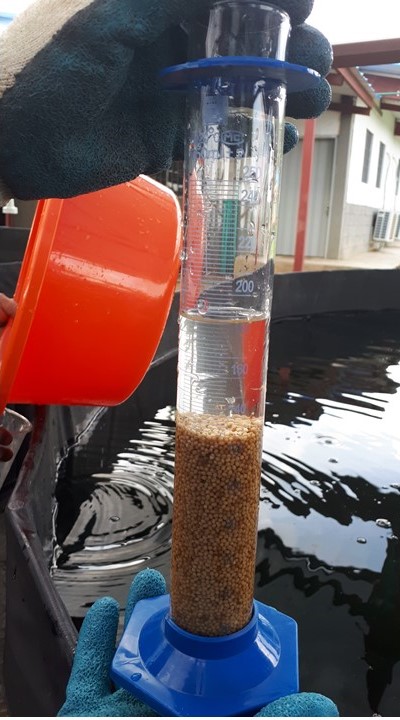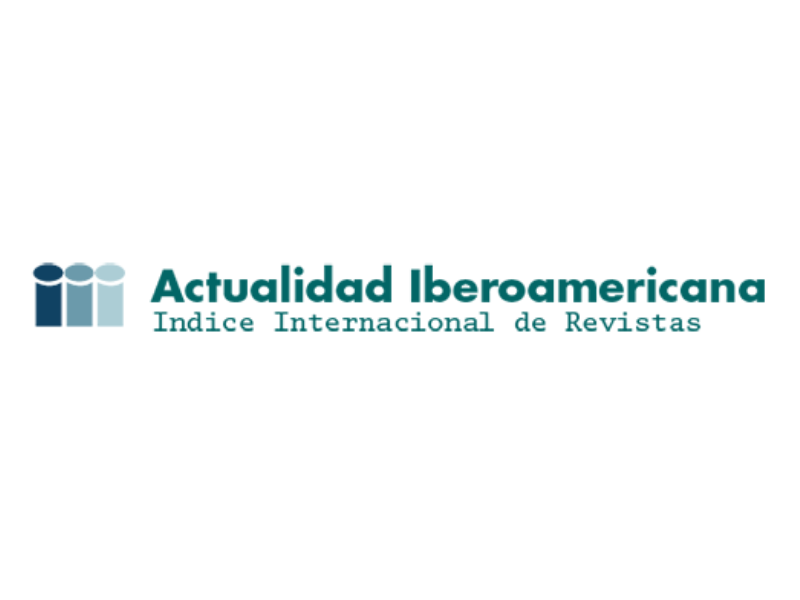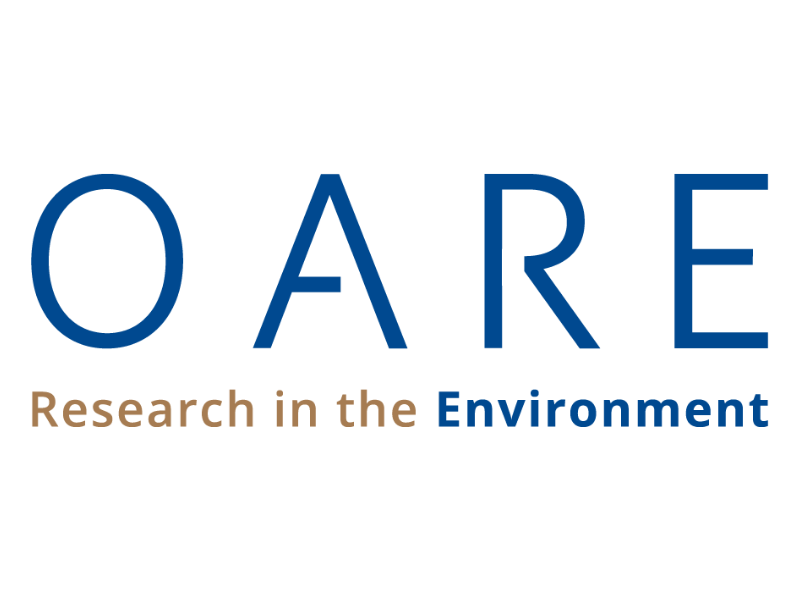Desempeño productivo de hembras de tilapia, Oreochromis niloticus, en diferentes métodos de cultivo.
Productive performance of tilapia females, Oreochromis niloticus, under different farming methods.

Esta obra está bajo una licencia internacional Creative Commons Atribución-NoComercial-CompartirIgual 4.0.
Mostrar biografía de los autores
Objetivos: el objetivo del trabajo fue evaluar los efectos de diferentes métodos de cultivo sobre el factor de condición y la producción de huevos en hembras de tilapia. Materiales y métodos: Se utilizaron tres lotes distintos de reproductores distribuidos en tres tratamientos - TC: agua verde (control), T1: “aquamimicry” y T2: biofloc, tomándose cada lote como repetición en cada tratamiento. Se usó una proporción sexual 3:1 y se empleó una dieta comercial con 32% de proteína proporcionada a saciedad dos veces al día, durante 60 días. Al inicio y al final del experimento se estimó el factor de condición de las hembras. Semanalmente se colectaron los huevos producidos en cada tanque y al final del experimento se estimó el volumen de producción de huevos en todos los tratamientos. Resultados: No se observaron diferencias significativas en el factor de condición entre los organismos al inicio del trabajo, pero sí al final, entre los lotes de reproductores, pero no entre los tratamientos; así mismo, al comparar dicho índice entre cada lote y cada tratamiento experimental al inicio y al final del periodo de alimentación, tampoco se observaron diferencias significativas. Se observaron diferencias significativas en la producción de huevos entre los tratamientos experimentales, siendo significativamente mayor la producción registrada en los tres lotes de reproductores del tratamiento T1, con volúmenes promedio de producción de alrededor de 70 ml. Conclusiones: El mantenimiento de reproductores de tilapia en sistemas de cultivo de “aquamimicry” resulta en un incremento significativo en el volumen de producción de huevos.
Visitas del artículo 243 | Visitas PDF
Descargas
- FAO. El estado mundial de la pesca y la acuicultura - Hacia la transformación azul. Roma, Italia: Organización de las Naciones Unidas para la Agricultura y la Alimentación; 2022. https://www.fao.org/publications/ sofia/2022/es/
- El-Sayed A-FM. Reproduction and seed production. In: El-Sayed A-FM, editor. Tilapia culture. 2nd Ed . Ox ford UK: CABI Publishing; 2019. https://www. elsevier.com/books/tilapia-culture/elsayed/978-0-12-816541-6
- Campanati C , Willer D, Schubert J, Aldridge DC. Sustainable Intensification of Aquaculture through Nutrient Recycling and Circular Economies: More Fish, Less Waste, Blue Growth. Rev Fish Sci Aquac. 2022; 30(2):143-169. https://doi.org/10.1080/2 3308249.2021.1897520
- Ebeling JM, Timmons MB, Bisogni JJ. Engineering analysis of the stoichiometry of photoautotrophic, autotrophic, and heterotrophic removal of ammonia–nitrogen in aquaculture systems. Aquaculture. 2006; 257(1-4):346-358. https://doi. org/10.1016/j.aquaculture.2006.03.019
- Islam MM, Barman A, Khan MI, Mukul SA, Stringer LC. Biofloc Aquaculture as an Environmentally Friendly Climate Adaptation Option. Anthropo Sci. 2022; 1:231-232. https://doi.org/10.1007/s44177-021- 00006-w
- Khanjani MH, Brito da Silva LO, Fóes KG, do Nascimento Vieira F, Poli MA, Santos M, et al. Synbiotics and aquamimicry as alternative microbial-based approaches in intensive shrimp farming and biofloc: Novel disruptive techniques or complementary management tool s? A s cien ti fi c-ba sed overview. Aquaculture. 2023; 567:739273. https://doi. org/10.1016/j.aquaculture.2023.739273
- Henares MNP, Madeiros MV, Camargo AFM. Overview of strategies that contribute to the environmental sustainability of pond aquaculture: rearing systems, residue treatment, and environmental assessment tools. Rev Aquacult. 2020; 12(1):453-470. https://doi.org/10.1111/raq.12327
- Martínez-Porchas M, Ezquerra-Brauer M, Mendoza-Cano F, Chan-Higuera JE, Vargas-Albores F, Martínez-Córdova LR. Effect of supplementing heterotrophic and photoautotrophic biofloc, on the production response, physiological condition and postharvest quality of the whiteleg shrimp, Litopenaeus vannamei. Aquac Rep. 2020; 16:100257. https://doi.org/10.1016/j. aqrep.2019.100257
- Custódio M, Villasante S, Calado R, Lillebo AI. Valuation of Ecosystem Services to promote sustainable aquaculture practices. Rev Aquacult. 2020; 12(1):392-405. https://doi.org/10.1111/raq.12324
- Yu YB, Choi JH, Lee JH, Jo AH, Lee KM, Kim JH. Biofloc Technology in Fish Aquaculture: A Review. Antioxidants. 2023; 12(2):398. https://doi.org/10.3390/antiox12020398
- Deepak AP, Vasava RJ, Elchelwar VR, Tandel DH, Vadher, KH, Shrivastava V, et al. Aquamimicry: New and innovative approach for sustainable development of aquaculture. J Entomol Zool Stu. 2020; 8(2):1019-1031. https://doi.org/10.22271/j.ento
- Khanjani MH, Mozanzadeh MT, Fóes GK. Aquamimicry system: a suitable strategy for shrimp aquaculture – a review. Ann Anim Sci. 2022; 22(4):1201-1210. https://doi. org/10.2478/aoas-2022-0044
- Chacrapani S, Panigrahi A, Sundaresan J, Sivacumar MR, Palanisamy R, Kumar V. Three different C:N ratios for Pacific white shrimp, Penaeus vannamei under practical conditions: Evaluation of growth performance, immune and metabolic pathways. Aquac Res. 2021; 52(3):1255- 1266. https://doi.org/10.1111/are.14984
- Mansour AT, Ashry OA, El-Neweshy MS, Asaqufi AS, Dighiesh HS, Ashour M, et al. Effect of Agricultural By-Products as a Carbon Source in a Biofloc-Based System on Growth Performance, Digestive Enzyme Activities, Hepatopancreas Histology, and Gut Bacterial Load of Litopenaeus vannamei Post Larvae. J Mar Sci Eng. 2022; 10(10):1333. https:// doi.org/10.3390/jmse10101333
- Khanjani MH, Sharifina M, Hajirazaee S. Recent progress towards the application of biofloc technology for tilapia farming. Aquaculture. 2022; 552:738021. https://doi. org/10.1016/j.aquaculture.2022.738021
- Chakravarty S, Kumar S, Prakash S. Back to the Basics: Biomimicry in Shrimp Farming. Int J Curr Microbiol App Sci. 2018; 7(5):2172-2184. https://doi.org/10.20546/ ijcmas.2018.705.253
- Flefil NS, Ezzat A, Aboseif AM, El-Dein AN. Lactobacillus-fermented wheat bran, as an economic fish feed ingredient, enhanced dephytinization, micronutrients bioavailability, and tilapia performance in a biofloc system. Biocatal Agricult Biotechnol. 2022; 45:102521. https://doi. org/10.1016/j.bcab.2022.102521
- Pérez-Chabela ML, Álvarez-Cisneros YM, Soriano-Santos J, Pérez-Hernández MA. Los probióticos y sus metabolitos en la acuicultura. Una Revisión. Hidrobiológica. 2020; 30(1):93-105. https://doi.org/10.24275/ uam/izt/dcbs/hidro/2020v30n1/Perez
- Kord MI, Srour TM, Omar EA, Farag AA, Nour AZM, Khalil HS. The Immunostimulatory Effects of Commercial Feed Additives on Growth Performance, Non-specific Immune Response, Antioxidants Assay, and Intestinal Morphometry of Nile tilapia, Oreochromis niloticus. Front Physiol. 2021; 12:627499. https://doi.org/10.3389/ fphys.2021.627499
- Hancz C. Application of Probiotics for Environmentally Friendly and Sustainable Aquaculture: A Review. Sustainability. 2022; 14:15479. https://doi.org/10.3390/ su142215479
- Mugwanya M, Dawood MAO, Kimera F, Sewilam H. Biofloc Systems for Sustainable Production of Economically Important Aquatic Species: A Review. Sustainability. 2021; 13:7255. https://doi.org/10.3390/ su13137255
- Khanjani MH, Sharifinia M. Biofloc technology as a promising tool to improve aquaculture production. Rev Aquacult. 2020; 12(3):1836- 1850. https://doi.org/10.1111/raq.12412
- Gioacchini G, Georgini E, Vaccari L, Carnevali O. Can Probiotics affect reproductive process of aquatic animals? In: Merrifield D, Ringo E., editors. Aquaculture Nutrition: Gut health, probiotics and prebiotics. Oxford UK: John Wiley & Sons, Ltd; 2014. https://doi. org/10.1002/9781118897263.ch12
- Ramos de Alvarenga E, Moreira de Salles SC, Soares de Brito T, Santos CR, Dias-SerafimCorrea R, de Oliveira-Alves GF, et al. Effects of biofloc technology on reproduction and ovarian recrudescence in Nile tilapia. Aquac Res. 2017; 48(12):5965-5972. https://doi. org/10.1111/are.13420
- Ekasari J, Zairin Jr M, Utami-Putri D, PutriSari N, Harris-Surawidjaja E, Bossier P. Biofloc-based reproductive performance of Nile tilapia Oreochromis niloticus L. broodstock. Aquac Res. 2015; 46:509-512. https://doi.org/0.1111/are.12185
- Zar JH. Biostatistical Analysis. 5th ed. NJ, USA: Pearson; 2010.
- Moraes de Oliveira M, Ribeiro T, Orlando TM, Silva de Oliveira DG, Drumond MM, Fonseca de Freitas R T, Vieira Rosa P. Effects crude protein levels on female Nile tilapia (Oreochromis niloticus) reproductive performance parameters. Anim Reprod Sci. 2014; 150(1-2):62-69. https://doi. org/10.1016/j.anireprosci.2014.08.006
- Migaud, H, Bell G, Cabrita E, McAndrew B, Davie A, Bobe J, et al. Gamete quality and broodstock management in temperate fish. Rev Aquacult. 2013; 5(1):194-223. https:// doi.org/10.1111/raq.12025
- Izquierdo MS, Fernández-Palacios H, Tacon AGJ. Effect of broodstock nutrition on reproductive performance of fish. Aquaculture. 2001; 197(1-4):25-42. https:// doi.org/10.1016/S0044-8486(01)00581-6
- Bobe J. Egg quality in fish: present and future challenges. Anim Front 2015; 5(1):66-72. https://doi.org/10.2527/af.2015-0010
- Ariza FG, Mujica E. Tecnología Biofloc (BFT), una alternativa sostenible para el desarrollo de la acuicultura: Una revisión. Ingeniería y Región. 2019; 21(1):2-11. https://doi. org/10.25054/22161325.1841
- Bossier P, Ekasari J. Biofloc technology application in aquaculture to support sustainable development goals. Microb Biotechnol. 2017; 10(5):1012-1016. https://doi.org/10.1111/1751-7915.12836
- Romano N, Dauda AB, Ikhsan N, Karim M, Kamarudin MS. Fermenting rice bran as a carbon source for biofloc technology improved the water quality, growth, feeding efficiencies, and biochemical composition of African catfish Clarias gariepinus juveniles. Aquac Res. 2018; 49(12):3691-3701. https://doi.org/10.1111/are.13837
- Froese, R. Cube law, condition factor and weight–length relationships: History, metaanalysis and recommendations. J Appl Ichthyol. 2006; 22(4):241–53. https://doi. org/10.1111/j.1439-0426.2006.00805.x
- Estrada-Godinez, JA, Rodríguez-Montes de Oca GA, Bañuelos-Vargas MI, MartínezMontaño E, Pacheco-Marges MR, RománReyes JC. Effect of feeding rate and hormonal treatments on the condition factor and the reproductive performance of the catfish, Pangasianodon hypophthalmus. J Appl Aquacult. 2022; 34(4):1005-1020. https://doi.org/10.1080/10454438.2021. 1914801
- Bobe J, Labbé C. Egg and sperm quality i n fi s h . G e n C om p E n d o c r. 2 0 1 0 ; 165(3):535-548. https://doi.org/10.1016/j. ygcen.2009.02.011
- Nisar U, Peng D, Mu Y, Sun Y. A Solution for Sustainable Utilization of Aquaculture Waste: A Comprehensive Review of Biofloc Technology and Aquamimicry. Front Nutr. 2022; 8:791738. https://doi.org/10.3389/ fnut.2021.791738
- Mohammady EY, Soaudy MR, Ali MM, ElAshry MA, El-Karim MSA, Jarmolowicz S, et al. Response of Nile tilapia under biofloc system to floating or sinking feed and feeding rates: Water quality, plankton community, growth, intestinal enzymes, serum biochemical and antioxidant status. Aquac Rep. 2023; 29:101489. https://doi. org/10.1016/j.aqrep.2023.101489
- Ferreira GS, Santos D, Schmachtlm F, Machado C, Fernandes V, Bögner M, et al. Heterotrophic, chemoautotrophic and mature approaches in biofloc system for Pacific white shrimp. Aquaculture. 2021; 533:736099. https://doi.org/10.1016/j. aquaculture.2020.736099
- Mehrim AI, Khalil FF, Hassan ME. Sexual Maturity Signs and Histological Alterations of Adult Oreochromis niloticus (Linnaeus, 1758) Fed Probiotic. Int J Anat Appl Physiol. 2019; 5(1):103-110. https://doi. org/10.19070/2572-7451-2000024
























